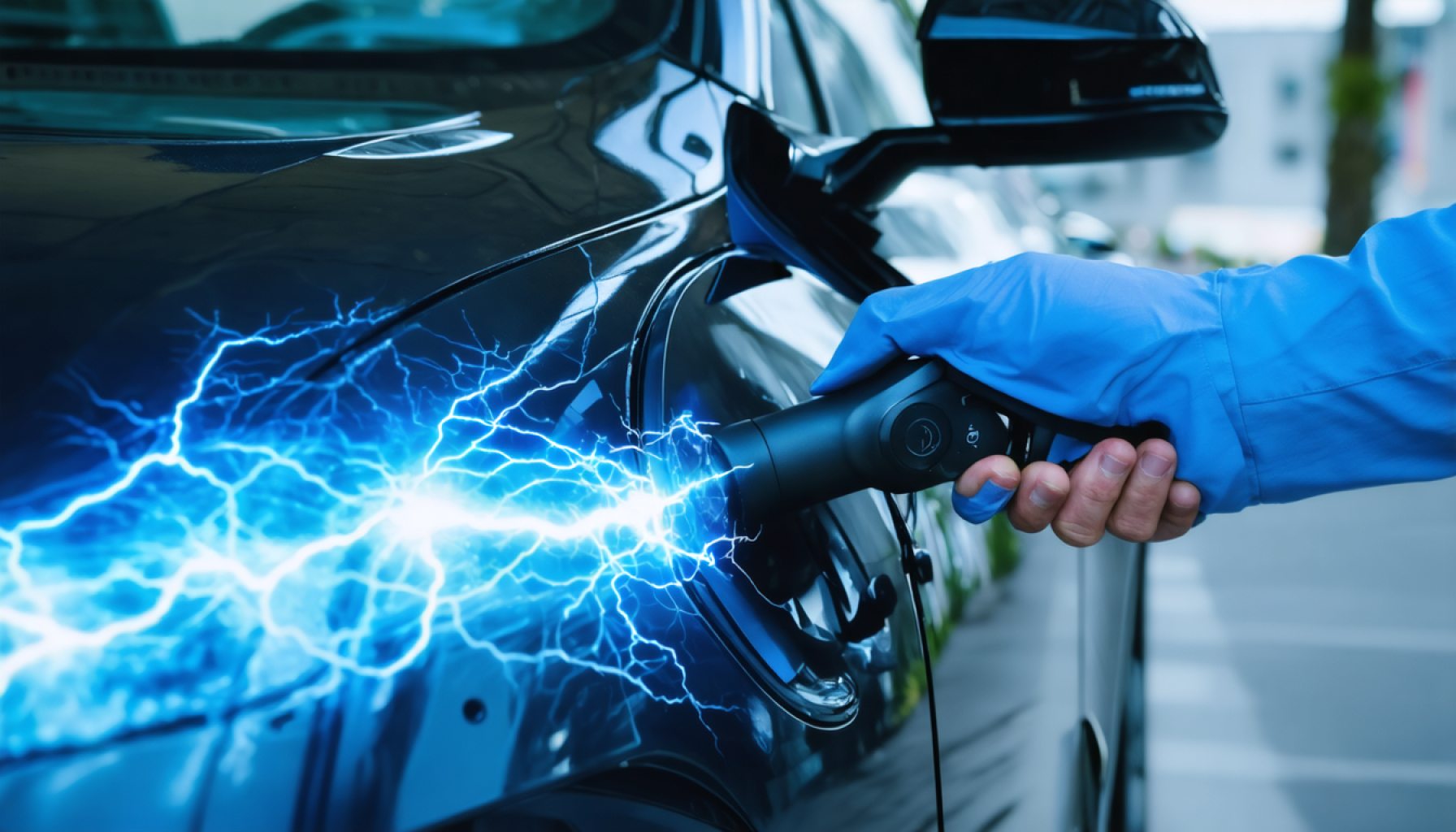- Hong Kong is rapidly advancing in electric transportation, focusing on innovative charging technologies.
- BYD, a leader in electric vehicles, has introduced a groundbreaking charger with a 1 megawatt peak power, reducing charging times to just five minutes for 400 kilometers.
- This advancement tackles “charging anxiety,” encouraging widespread adoption of electric vehicles.
- With significant investor confidence, BYD’s stock rose by over 6% on the Hong Kong market following the announcement.
- Hong Kong aims to be a leading hub for electric vehicle innovation, essential for attracting global interest and investment.
- As urban areas face environmental challenges, Hong Kong’s model could inspire future urban mobility solutions worldwide.
Hong Kong, once a city renowned for its neon-lit skyline and iconic double-decker trams, is accelerating into a new era of electric transportation, driven not only by the cars but by the charging marvels powering them. The city stands poised at the cusp of an electrifying transformation, fueled by groundbreaking advancements in charger and battery technology.
The spotlight now shines on BYD, a titan in the realm of electric vehicles. This Shenzhen-based powerhouse has electrified the industry by unveiling a revolutionary charging system. In a bold move, BYD introduced a charger that sprints at an astonishing 1 megawatt peak power. This new system slashes charging times to a mere five minutes—enough to energize a vehicle for an impressive 400 kilometers, rivaling and even surpassing the efficiency of Tesla’s revered superchargers.
This innovation represents more than just a technical feat; it’s a psychological breakthrough. By eliminating the long-standing “charging anxiety” that has deterred traditional drivers from embracing electric vehicles, BYD is paving the way for a greener future. With this new technology, the roadblocks to EV adoption are fading, leaving a clear path for eco-friendly travel.
The reveal sparked a surge in BYD’s stock, climbing over 6% on the Hong Kong market—a clear indicator of the confidence investors have in this transformative step toward sustainable transportation.
For Hong Kong, the implications of this advancement are electric. As the city strives to establish itself as a leading hub for electric vehicle innovation and testing, the integration of such cutting-edge technologies is indispensable. Strengthening its infrastructure for fast and efficient charging will be crucial to not only meet local demands but also to attract global interest and investment.
As urban centers worldwide grapple with pollution and climate change, Hong Kong’s journey could serve as a guiding light. The city is charging forward, literally and figuratively, with a blueprint that could redefine urban mobility. By embracing and enhancing these technological strides, Hong Kong has the opportunity to set a precedent in sustainable development, offering a new vision of possibility where the city’s well-lit skyline reflects not only its past but a promising, vibrant, electric future.
The Future of Electric Transportation in Hong Kong: A Mega-Charge Towards Sustainability
Revolutionizing Electric Vehicle Infrastructure
Hong Kong is amidst a transformative change with electric transportation at its core. As cities globally aim to reduce emissions and lead with sustainable development, Hong Kong positions itself as a frontrunner. Understanding the broader impact of this advancement gives insights into the future of urban mobility and sustainability.
BYD’s Innovation and Its Implications
BYD’s 1 Megawatt Charger:
– Peak Power and Efficiency: The newly introduced BYD charger delivers an unprecedented 1 megawatt of power, enabling vehicles to gain 400 kilometers of range in just five minutes. This rivals the best existing technologies, marking a significant leap in electric vehicle (EV) charging capabilities.
– Market Disruption: BYD’s charger challenges existing market leaders like Tesla, which has set the standard with its supercharger network. This competition may drive further innovations and improvements in EV infrastructure worldwide.
Pressing Questions About the Transformation
1. What Does the 1 Megawatt Charger Mean for EV Adoption?
– The reduction of charging time addresses the “range anxiety” often cited by potential EV users. This psychological barrier has been a significant hurdle, and with quicker recharging times, EVs become more appealing to traditional vehicle owners.
2. How Will Hong Kong Enhance Its EV Infrastructure?
– For Hong Kong to capitalize on BYD’s technology, widespread deployment of these chargers is essential. This would involve strategic placement across the city to ensure convenience and accessibility for all EV owners.
3. What Are the Broader Environmental Benefits?
– Increased adoption of EVs can lead to significant reductions in urban air pollutants and greenhouse gas emissions, crucial for combating climate change and improving public health.
Industry Trends and Market Forecasts
– Growth in EV Market: The global EV market continues to expand, with predictions suggesting a compound annual growth rate (CAGR) of over 20% in the coming years. Hong Kong’s advancements position it to become a key player in this growth.
– Investment in Infrastructure: Governments and private investors will likely increase investments in EV infrastructure, recognizing the economic and environmental benefits.
Addressing Challenges and Limitations
Challenges:
– Infrastructure Costs: Developing and deploying a network of ultra-fast chargers involves substantial financial inputs and coordinated efforts among stakeholders.
– Grid Capacity: Increased demand for electric charging may strain existing electrical grids, necessitating upgrades and sustainable energy solutions.
Solutions:
– Governments and utility companies can collaborate to optimize grid capacity and integrate renewable energy sources into the charging network.
Actionable Recommendations for EV Enthusiasts
1. Explore EV Options: Potential buyers should explore various EV models that benefit from fast-charging capabilities.
2. Stay Informed on Incentives: Keep abreast of government incentives for EV purchase and infrastructure development, which can decrease overall costs.
3. Advocate for More Charging Stations: Support policies and initiatives that aim to enhance the EV charging network in local communities.
For more information on advancements in electric transportation, consider visiting .
Hong Kong’s commitment to integrating innovative EV technologies sets a promising example for cities worldwide. By embracing cutting-edge developments like BYD’s 1-megawatt charger, the city is paving the way for a sustainable, eco-friendly urban future.











